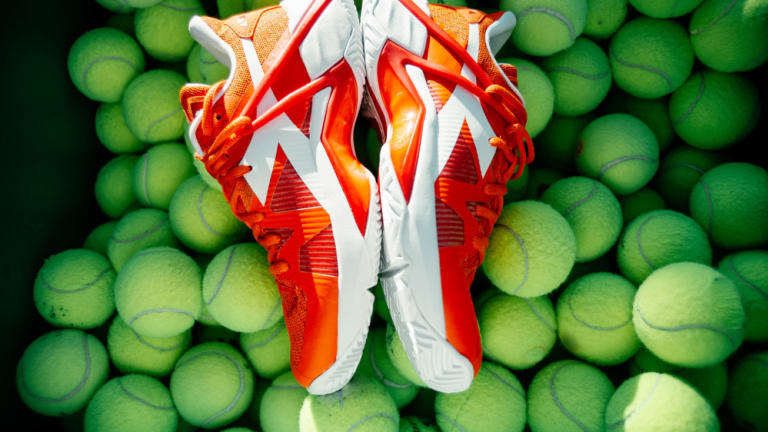When it comes to judging shoes, most players turn into Goldilocks. They want something that's sturdy and supportive, but not too rigid; durable and dependable, but not too heavy; responsive and low to the ground, but not at the expensive of plush cushioning. Invariably something has to give. Most shoes just can’t juggle all these opposing demands. While not always mentioned in the same breath as some of the more heralded brands, Diadora’s new B.Icon may straddle that line as well as any recent offering.
Although a fan of its Star K line, it had been some time since I sampled anything from Diadora. A recent trip to a favorite local tennis retailer introduced me to the B.Icon. The first generation shoe is designed to be the lightest and most responsive the brand has ever produced. With my size 11.5 checking in at 14.8 oz. it’s no flyweight, but it still had speed written all over it.
The fit of the shoe was fairly true to size. It could be a smidge long; if often between sizes depending on brand, it might be advisable to drop down to the smaller choice. However, if you’ve always been a solid number, it will probably hold true with the B.Icon as well.
The upper—constructed of D-Skin covering Air Mesh material—hugged the foot and flexed well during hard cuts. The mesh is layered and fairly plush, which also bolstered comfort. However, it did raise concerns about ventilation. I only tested the shoe indoors and in temperate outdoor weather, and there were no breathability issues. But it would be premature to give it a stamp of approval in toasty conditions.
Another nitpick was after several weeks of wear I did notice some peel away of the skin from the mesh underlay around the lateral part of the toe box in my right shoe. It had no noticeable effect on performance, but diminished the aesthetics.
One notable innovation on the upper was the external stabilizer hook located on the lateral side of the shoe. Incorporated into the lacing system, it was a clever way to increase stability around the ankle when executing side-to-side movement. And since it’s on the outside of the shoe rather than directly integrated in the upper, it didn't make the shoe feel stiff or rigid.
Like the Mizuno Exceed Tour 5, another recently released and reviewed speed shoe, the B. Icon also had a high heel counter. However, in this case the collar sat higher up on the ankle, so the appearance wasn’t so dramatic. And the high profile did an effective job of keeping the ankle and back of the foot more secure.

